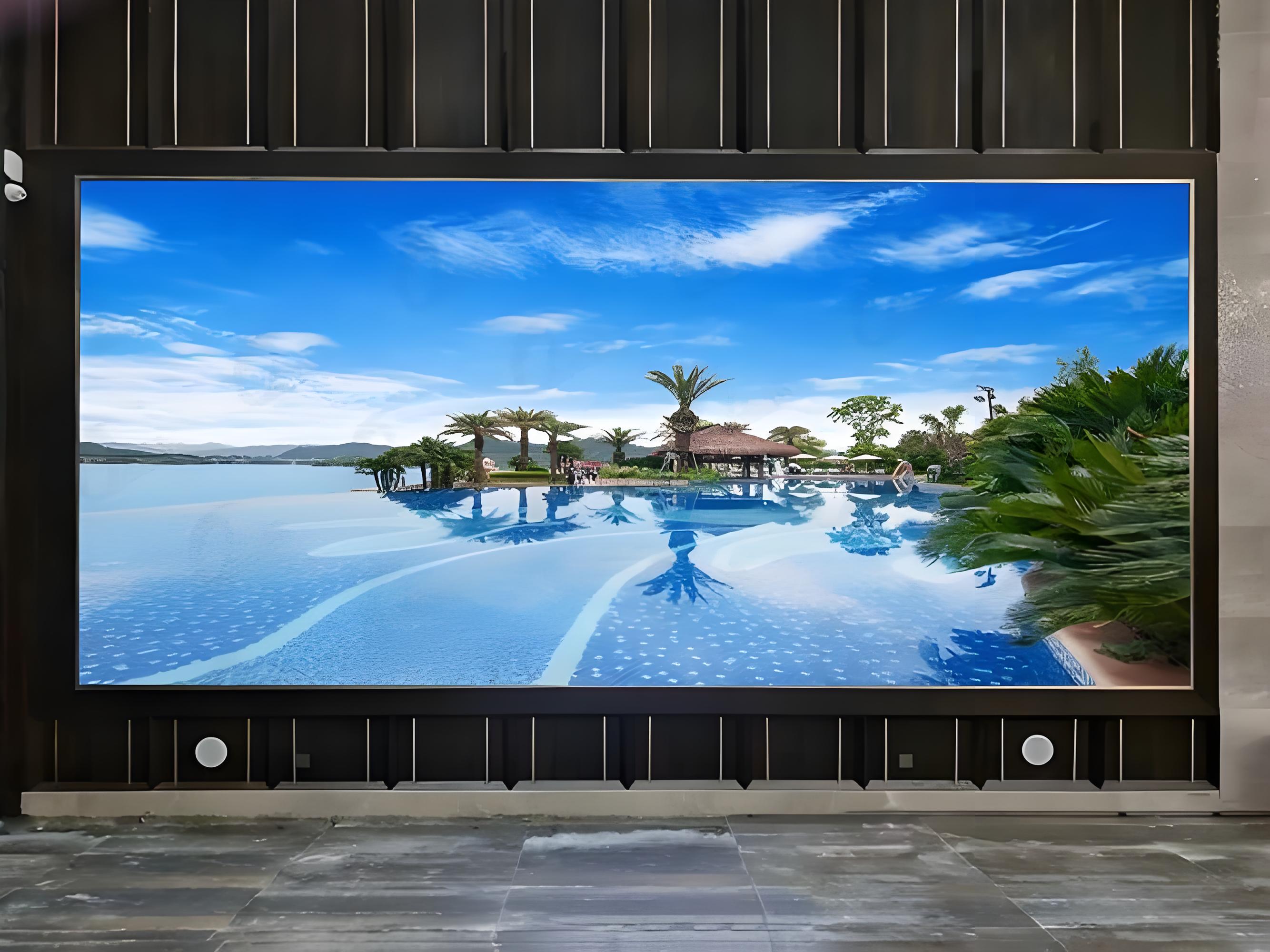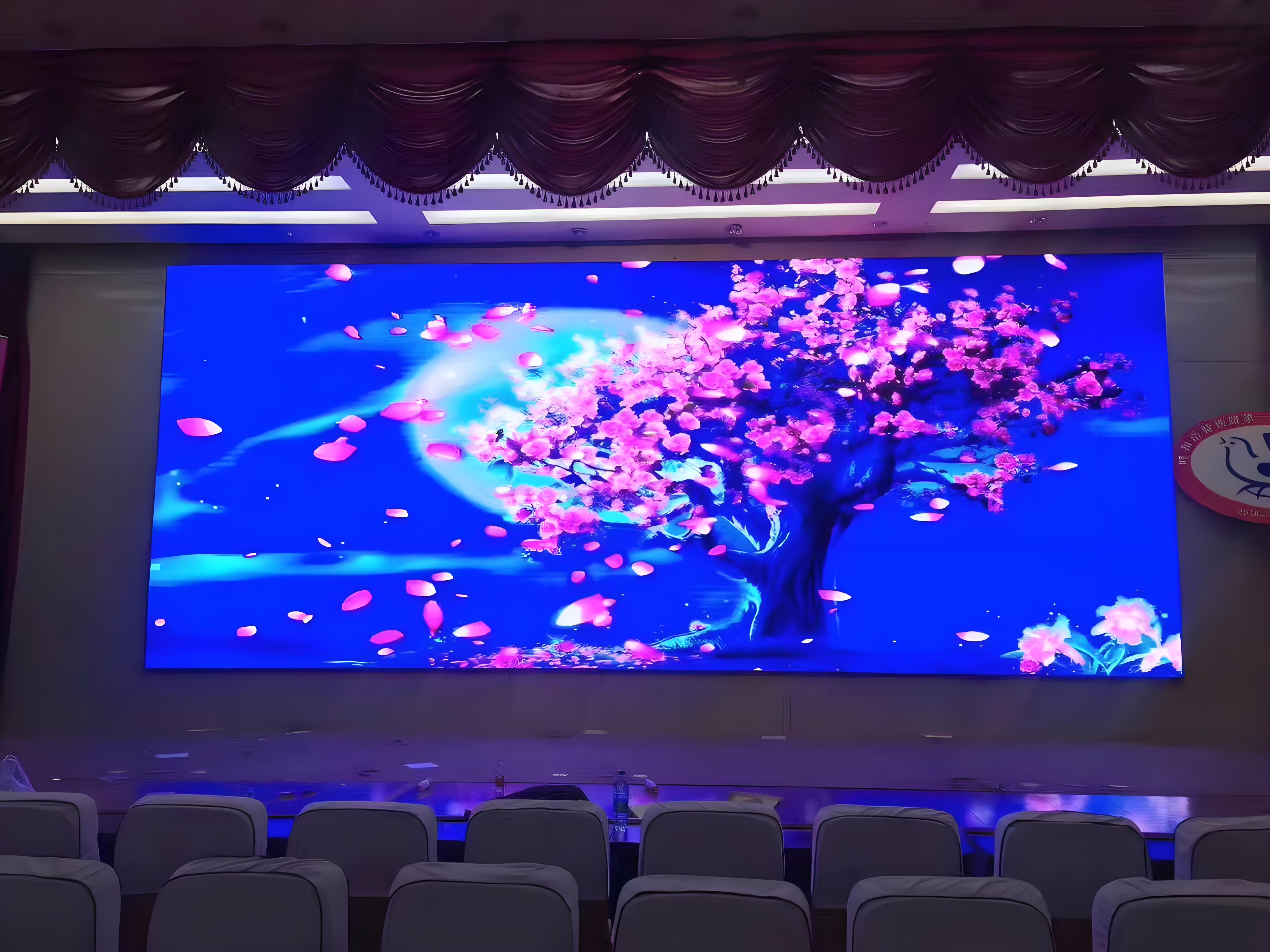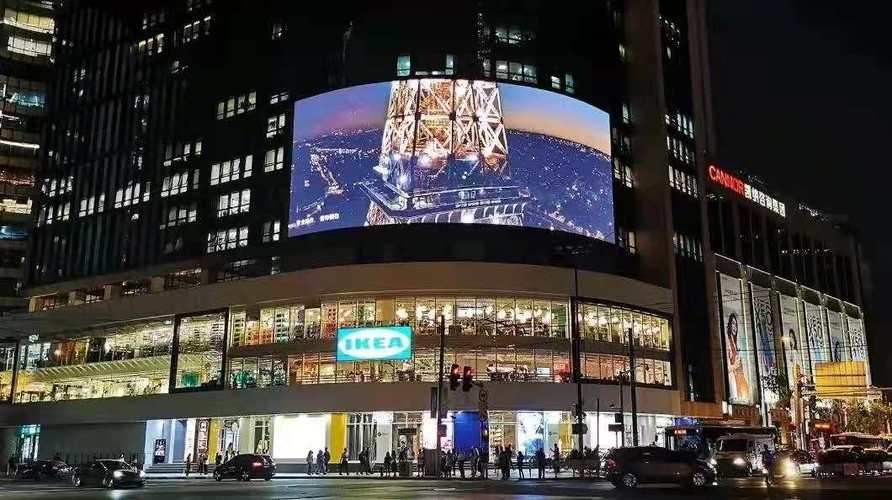The "P" in LED displays is a professional term used to represent the pixel pitch, which is the straight-line distance between the centers of two adjacent pixels on the display screen. This concept is an important standard for measuring the precision of display screens, usually measured in millimeters (mm).
According to the size of pixel pitch, LED displays can be divided into three types: small pitch, regular pitch, and large pitch.
Small pitch LED display screen

⑴ Pixel spacing
The pixel spacing of small pitch LED displays is usually P2 or below, which means that the physical distance between every two pixels is very short. The common small pitch specifications in the market include P1.25, P1.5625 (also commonly referred to as P1.5 or P1.6), P1.875, and even finer specifications such as P0.9 and P1.0
⑵ Image quality performance
Due to the tight arrangement of pixels, small pitch LED displays can present extremely high clarity and delicate picture quality. This type of display screen can provide almost seamless visual effects when displaying high-definition videos, fine images, or text, allowing viewers to see every detail more clearly.
⑶ Application scenarios
Small pitch LED displays are particularly suitable for indoor environments that require extremely high image quality. For example, in a conference room, it can be used to display high-definition meeting content, charts, and videos; In the command center, it can provide real-time monitoring images and data; In exhibition displays, it can showcase high-resolution images and videos to attract the audience's attention.
⑷ Technical advantages
Small pitch LED displays typically use advanced LED technology and driver circuits to ensure stable performance and long lifespan. In addition, they may also have higher refresh rates and wider color gamut, providing smoother dynamic images and richer color rendering.
⑸ Cost and considerations
Although small pitch LED displays have significant advantages in image quality, their production costs and selling prices are relatively high. Therefore, when making a choice, it is necessary to comprehensively consider factors such as budget, application scenarios, and performance requirements.
Overall, small pitch LED displays have a wide range of application prospects in indoor environments that require high-quality visual presentation due to their high definition and delicate picture quality. With the continuous advancement of technology and the reduction of costs, it is believed that small pitch LED displays will become more popular and applied in various fields in the future.
Conventional spacing LED display screen

⑴ Pixel spacing
The pixel spacing of conventional pitch LED displays is usually above P2, but generally does not exceed P6. The pixel spacing within this range, such as P2.5, P3, P4, etc., is the most common and widely used specification in the market.
⑵ Balance between clarity and cost
This type of LED display achieves a good balance between clarity and cost. Compared with small pitch LED displays with smaller pixel spacing, conventional pitch displays have lower costs while still providing clear enough picture quality to meet the needs of most application scenarios.
⑶ Applicable environment
Conventional pitch LED displays are suitable for various indoor and outdoor environments. Indoors, such as shopping malls, conference rooms, exhibition halls, etc., it can be used to display advertisements, product information, or conference content; Outdoors, such as sports arenas, squares, stage backgrounds, etc., it can provide large-sized, high brightness visual displays to attract the audience's attention.
⑷ Performance characteristics
Conventional pitch LED displays typically have good brightness and contrast, and can maintain clear visual effects under different lighting conditions. At the same time, they may also have waterproof, dustproof, earthquake resistant and other characteristics to adapt to complex outdoor environmental conditions.
⑸ Flexibility and Scalability
This type of display screen usually has a modular design, which can be spliced and expanded according to actual needs to form larger display screens. This flexibility enables conventional pitch LED displays to adapt to installation requirements of different sizes and shapes.
⑹ Market application
Due to its balanced performance and cost, conventional pitch LED displays have a wide range of applications in the market. From commercial advertisements to sports events, from cultural performances to public information dissemination, the presence of conventional pitch LED displays can be seen.
Overall, conventional pitch LED displays have been widely used in various indoor and outdoor environments due to their moderate pixel pitch, good clarity, and cost-effectiveness. With the continuous advancement of technology and the continuous development of the market, we believe that conventional pitch LED displays will continue to play their advantages, bringing more convenience and excitement to people's lives and work.
Large pitch LED display screen

⑴ Pixel spacing
The pixel pitch of large pitch LED displays is usually above P6, with common specifications including P6, P8, P10, and even larger specifications such as P16 and P20. This larger pixel spacing results in a relatively longer physical distance between each pixel point.
⑵ Remote viewing
Due to the large pixel spacing, large pitch LED displays can still maintain clear visual effects when viewed from a distance. This is because larger pixels can be clearly recognized by the audience at a greater distance, without causing visual blur due to their small size.
⑶ Outdoor environmental applications
Large pitch LED displays are mainly used in outdoor environments, such as billboards, traffic signs, and large concert stage backgrounds. These scenes typically require large-sized, high brightness displays to attract the audience's attention, and viewers often watch from a distance.
⑷ High brightness and waterproof performance
In order to adapt to outdoor lighting conditions and weather changes, large pitch LED displays typically have very high brightness and good waterproof performance. In this way, even in strong sunlight or rainy weather, the display screen can still maintain clear visual effects and stable operation.
⑸ Cost effectiveness
Compared to small pitch and conventional pitch LED displays, large pitch LED displays typically have lower production costs and selling prices. This makes large pitch displays more cost-effective in scenarios that require a large display area but have limited budget.
⑹ Installation and maintenance
The installation and maintenance of large pitch LED display screens are relatively simple and convenient. Due to the large pixel spacing, the display screen is more modular and spliceable, allowing for flexible installation and adjustment according to actual needs. Meanwhile, larger pixels are also easier to maintain and replace.
Overall, large pitch LED displays have broad application prospects in outdoor environments due to their large pixel pitch, high brightness, and good waterproof performance. Whether it's commercial advertisements, traffic signs, or large-scale concert stage backgrounds, large pitch LED displays can provide clear and stable visual effects, adding more color and vitality to people's lives and entertainment.
When choosing an LED display screen, in addition to considering pixel spacing, factors such as viewing distance, usage environment, and budget also need to be taken into account. For example, for indoor environments with close viewing distances, small pitch LED displays can be chosen to achieve higher clarity; For outdoor environments with long viewing distances, large pitch LED displays can be chosen to reduce costs and meet the needs of long-distance viewing.
Post time: Mar-27-2025




